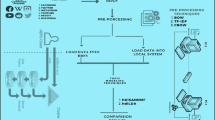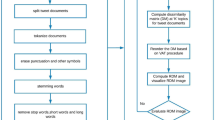Abstract
Social media is the leading platform to accomplish large data in the field of health discipline tweets everywhere in the world empowerment currently. And it is a prominent data source for searching health terms (topics) and predicts solutions in the direction of health care. Health care has become one of the largest sectors in the world in terms of income and employment. Billions of customers use Twitter daily to enable people to share health-related topics of their views and opinions on various healthcare topics. Topic models commence from natural language processing (NLP) to acquiring immeasurable knowledge on healthcare areas which highly motivated to analyze the topic models (TM). Topic models are addressed intended for the squeezing of health topics for modeling the selective latent tweet documents in the healthcare system. Analyzing the topics in TM is an essential issue and facilitates an unreliable number of topics in TM that address the destitute results in health-related clustering (HRC) in various structured and unstructured data. In this regard, needful visualizations are imperative measurements to clip** the information for identifying cluster direction. So that, to believe and contribute proposed distributed multimodal active topic models such as Hadoop distributed non-negative matrix factorization (HdinNMF), Hadoop distributed latent Dirichlet allocation (HdiLDA), and Hadoop distributed probabilistic latent schematic indexing (HdiPLSI) are reasonable approaches for balancing and clip** to the direction of health topics from various perspective data sources in health statistics clustering. Hadoop DiNNMF distributed model is achieved and covered by cosine metrics when exposed to visual clusters and good performance measures compared to other methods in a series of health conditions. This assistance briefly describes the public health structure (hashtags) in good condition in the country and tracks the evolution of the main health-related tweets for preliminary advice to the public.
Access this chapter
Tax calculation will be finalised at checkout
Purchases are for personal use only
Similar content being viewed by others
References
Rashid, J. et al.: Topic modeling technique for text mining over biomedical text corpora. https://doi.org/10.1109/ACCESS.2019.2944973
Holzinger, A., Schantl, J., Schroettner, M., Seifert, C., Verspoor, K.: Biomedical text mining: state-of-the-art, open problems and future challenges. In: Interactive Knowledge Discovery and Data Mining in Biomedical Informatics, pp. 271–300. Springer, Berlin, Germany (2014)
Blei, D.M., Ng, A.Y., Jordan, M.I.: Latent Dirichlet allocation. J. Mach. Learn. Res. 3, 993–1022 (2003)
Landauer, T.K., Laham, D., Rehder, B., Schreiner, M.E.: A comparison of latent semantic analysis and humans. In: Proceedings of 19th Annual Meeting Cognition Science and Society, pp. 412–417 (1997)
Deerwester, S., Dumais, S.T., Furnas, G.W., Landauer, T.K., Harshman, R.: Indexing by latent semantic analysis. J. Amer. Soc. Inf. Sci. 41(6), 391407 (1990)
Dredze, M.: How social media will change public health. IEEE Intell Syst 27(4), 81–84 (2012)
Neuhauser, A.: Health Care Harnesses Social Media. U.S. News, (2014). https://www.usnews.com/news/articles/2014/06/05/health-care-harnessessocial-media
Hawn, C.: Take two aspirin and tweet me in the morning: how Twitter, Facebook, and other social media are resha** health care. Health Aff. 28(2), 361–368 (2009)
Subbarayudu, Y., Patil, S., Ramyasree, B., Praveen Kumar, C., Geetha, G.: Assort-EHR graph based semi-supervised classification algorithm for mining health records. J. Adv. Res. Dyn. Control Syst. EID: 2-s2.0–85058439255
Agrawal, A.: What is wrong with topic modeling? (And how to fix it using search-based SE). IEEE Trans. Softw. Eng. (2016). https://doi.org/10.1016/j.infsof.2018.02.005
Blei, D.M.: Probabilistic topic models. Commun. ACM 55(4), 77–84 (2012)
Grifths, T.L., Steyvers, M., Tenenbaum, J.B.: Topics in semantic representation. Psychol. Rev. 114(2), 211–244 (2007)
Wallach, H.M.: Topic modeling: beyond bag-of-words. In: Proceedings of ICML, pp. 977–984 (2006)
Grifths, T.L., Steyvers, M.: Finding scientific topics. Proc. Nat. Acad. Sci. USA 101(1), 5228–5235 (2004)
Gürcan, F.: Major research topics in big data: a literature analysis from 2013 to 2017 using probabilistic topic models. In: Proceedings of the International Conference on Artificial Intelligent Data Process (IDAP), pp. 1–4 (2018)
Gurcan, F., Kose, C.: Analysis of software engineering industry needs and trends: Implications for education. Int. J. Eng. Educ. 33(4), 1361–1368 (2017)
Tian, K., Revelle, M., Poshyvanyk, D.: Using latent Dirichlet allocation for automatic categorization of software. In: Proceedings of the 6th IEEE International Working Conference on Mining Software Repositories, pp. 163–166 (May 2009)
Zhai, Z., Liu, B., Xu, H., Jia, P.: Constrained LDA for grou** product features in opinion mining. In: Proceedings of Pacific Asia Conference on Knowledge Discovery Data Mining, pp. 448–459 (2011)
Wu, Q., Zhang, C., Hong, Q., Chen, L.: Topic evolution based on LDA and HMM and its application in stem cell research. J. Inf. Sci. 40(5), 611–620 (2014)
Bagheri, A., Saraee, M., de Jong, F.: ADM-LDA: An aspect detection model based on topic modelling using the structure of review sentences. J. Inf. Sci. 40(5), 621–636 (2014)
Hong, L., Davison, B.D.: Empirical study of topic modeling in Twitter. In: Proceedings of the 1st Workshop Social Media Analysis, pp. 80–88 (Jul 2010)
Chen, Z., Huang, Y., Tian, J., Liu, X., Fu, K., Huang, T.: Joint model for subsentence-level sentiment analysis with Markov logic. J. Assoc. Inf. Sci. Technol. 66(9), 19131922 (2015)
Liu, L., Tang, L., Dong, W., Yao, S., Zhou, W.: An overview of topic modeling and its current applications in bioinformatics. SpringerPlus 5, 1608 (2016)
Cohen, R., Aviram, I., Elhadad, M., Elhadad, N.: Redundancy-aware topic modeling for patient record notes. PloS ONE, 9, (2014). Article no. e87555
Kintsch, W.: The potential of latent semantic analysis for machine grading of clinical case summaries. J. Biomed. Inform. 35(1), 37 (2002)
Cohen, T., Blatter, B., Patel, V.: Simulating expert clinical comprehension: Adapting latent semantic analysis to accurately extract clinical concepts from psychiatric narrative. J. Biomed. Inform. 41(6), 10701087 (2008)
Yeh, J.-F., Wu, C.-H., Chen, M.-J.: Ontology-based speech act identication in a bilingual dialog system using partial pattern trees. J. Amer. Soc. Inf. Sci. Technol. 59(5), 684694 (2008)
Ginter, F., Suominen, H., Pyysalo, S., Salakoski, T.: Combining hidden Markov models and latent semantic analysis for topic segmentation and labeling: method and clinical
Haoxiang, W.: Emotional analysis of bogus statistics in social media. J. Ubiquitous Comput. Commun. Technol. (UCCT) 2(03), 178–186 (2020)
Yan, X., Guo, J.: Learning topics in short text using ncut-weighted non-negative matrix factorization on term correlation matrix
Yan, X., Guo, J.: Clustering short text using Ncut-weighted non-negative matrix factorization. In: Proceedings CIKM 2012, pp. 2259–2262. HI, USA, Miami (2012)
Blei, D.M., Ng, A.Y., Jordan, M.I.: Latent dirichletallocation. J. Mach. Learn. Res. 3, 993–1022 (2003)
Lee, D.D., Seung, H.S.: Learning the parts of objects by non-negative matrix factorization. Nature 401(6755), 788–791 (1999)
Lee, D.D., Seung, H.S.: Algorithms for non-negative matrix factorization. In: Annual Conference on Neural Information Processing Systems, pp. 556–562 (2000)
Choo, J., Lee, C., Reddy, C.K., Park, H.: Utopian: user-driven topic modeling based on interactive nonnegative matrix factorization. IEEE Trans. Visual Comput. Graph. 19(12), 1992–2001 (2013)
Lee, D., Seung, H.: Algorithms for non-negative matrix factorization. In: Advances in Neural İnformation Processing Systems 13, NIPS 2000, pp 556–562. Denver, CO, USA (2000)
Pattanodom, M., Iam-On N., Boongoen, T.: Clustering data with the presence of missing values by ensemble approach. In: 2016 Second Asian Conference on Defense Technology (ACDT) (2016). https://doi.org/10.1109/acdt.2016.7437660
Amelio, A., Pizzuti, C.: Is normalized mutual information a fair measure for comparing community detection methods? In: IEEE/ACM International Conference on Advances in Social Networks Analysis and Mining (2015)
Xu, G., Meng, Y., Chen, Z., Qiu, X., Wang, C., Yao, H.: Research on topic detection and tracking for online news texts. IEEE Access 7, 58407–58418 (2019). https://doi.org/10.1109/access.2019.2914097
Huang, L., Ma, J., Chen, C.: Topic detection from microblogs using T-LDA and perplexity. In: 24th Asia-Pacific Software Engineering Conference Workshops (2017)
Li, Z., Shang, W., Yan, M.: News text classification model based on-topic model. In: 2016 IEEE/ACIS 15th International Conference on Computer And İnformation Science (ICIS) (2016)
Al Amin, H.M., Arefin, M.S., Dhar, P.K.: A method for video categorization by analyzing text, audio, and frames. Int. J. Inf. Tecnol. https://doi.org/10.1007/s41870-019-00338-2
Bashar, A.: Intelligent development of big data analytics for manufacturing industry in cloud computing. J. Ubiquitous Comput. Commun. Technol. (UCCT) 1(01), 13–22 (2019)
Acknowledgements
The research work supported the governmental and private health organizations, junior and senior researchers, and research and development of the health science institutions, for their excellent advice throughout the study.
Author information
Authors and Affiliations
Editor information
Editors and Affiliations
Rights and permissions
Copyright information
© 2022 The Author(s), under exclusive license to Springer Nature Singapore Pte Ltd.
About this paper
Cite this paper
Subbarayudu, Y., Sureshbabu, A. (2022). Distributed Multimodal Aspective on Topic Model Using Sentiment Analysis for Recognition of Public Health Surveillance. In: Jeena Jacob, I., Gonzalez-Longatt, F.M., Kolandapalayam Shanmugam, S., Izonin, I. (eds) Expert Clouds and Applications. Lecture Notes in Networks and Systems, vol 209. Springer, Singapore. https://doi.org/10.1007/978-981-16-2126-0_38
Download citation
DOI: https://doi.org/10.1007/978-981-16-2126-0_38
Published:
Publisher Name: Springer, Singapore
Print ISBN: 978-981-16-2125-3
Online ISBN: 978-981-16-2126-0
eBook Packages: Intelligent Technologies and RoboticsIntelligent Technologies and Robotics (R0)




